Table of Content
Kyoto Attractions | Fushimi Inari Shrine
Fushimi Inari Taisha Shrine is the head shrine of 30,000 Inari Shrines throughout Japan, and is dedicated to the Inari gods, the gods of food. The tour of Fushimi Inari Shrine begins with a visit to the Miyuki-dori street, which is a busy street outside the shrine. After passing through the Miyuki-dori, follow the map and visit the Luminous Gate, the Hall of Worship, and the Main Hall. After that, follow the map to the main hall, the outer worship hall and the main hall, and then go up to the Senbon torii, which is one of the most popular houses.
![Kansai, Japan] What are the must-see attractions for a three-day trip to Kyoto for the first time? The first visit to Kyoto attractions recommended organization 1 Kyoto,Kyoto Attractions,Kyoto 3 Days Tour 1](https://blog.travelhackfun.com/wp-content/uploads/2021/06/batch_2017-05-24-12-07-43.jpg)
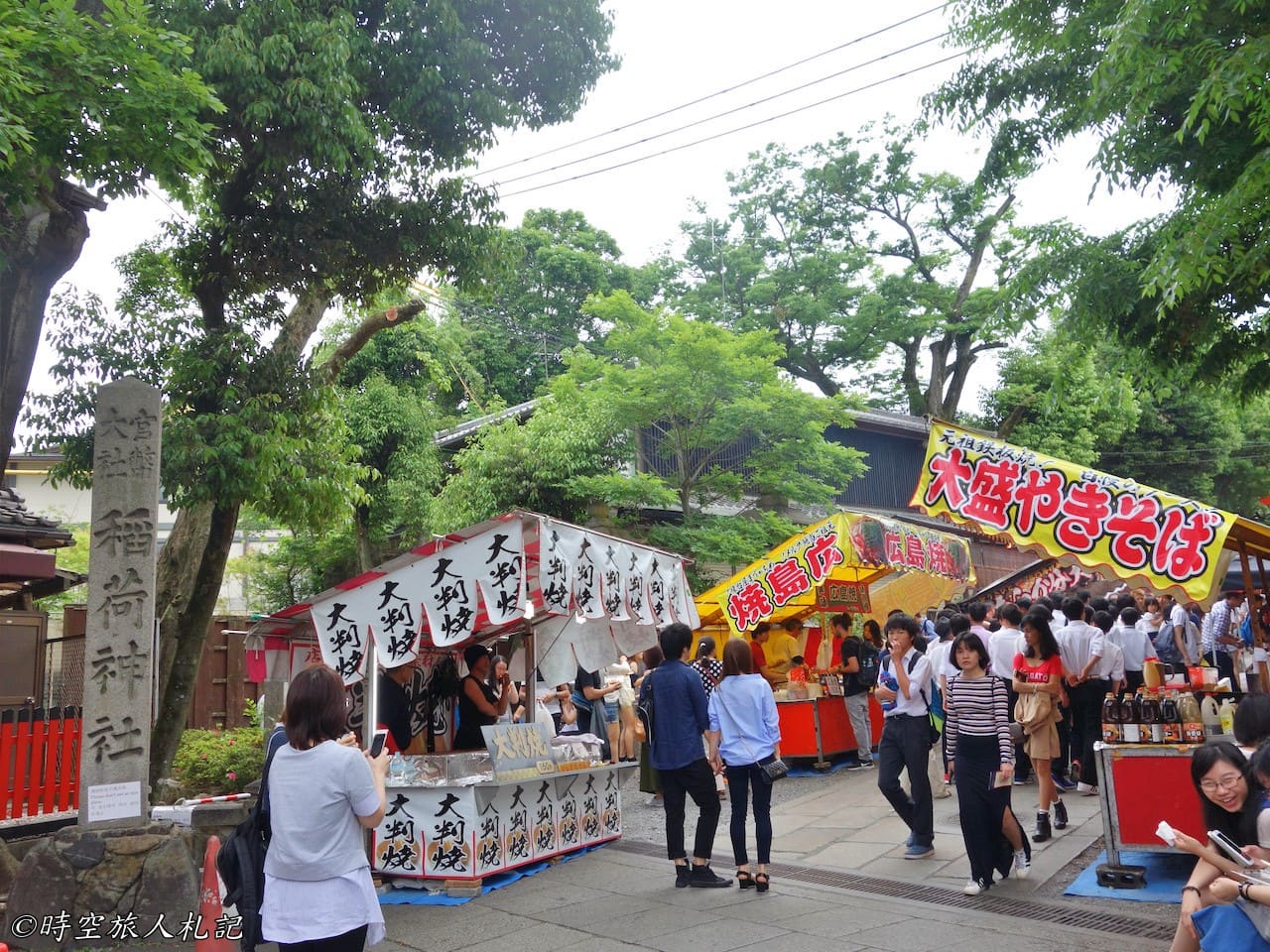
![Kansai, Japan] What are the must-see attractions for a 3-day trip to Kyoto? First visit to Kyoto sightseeing recommendations to organize 3 Fushimi Inari Shrine, Kyoto](https://blog.travelhackfun.com/wp-content/uploads/2021/06/batch_2017-05-24-12-18-17.jpg)

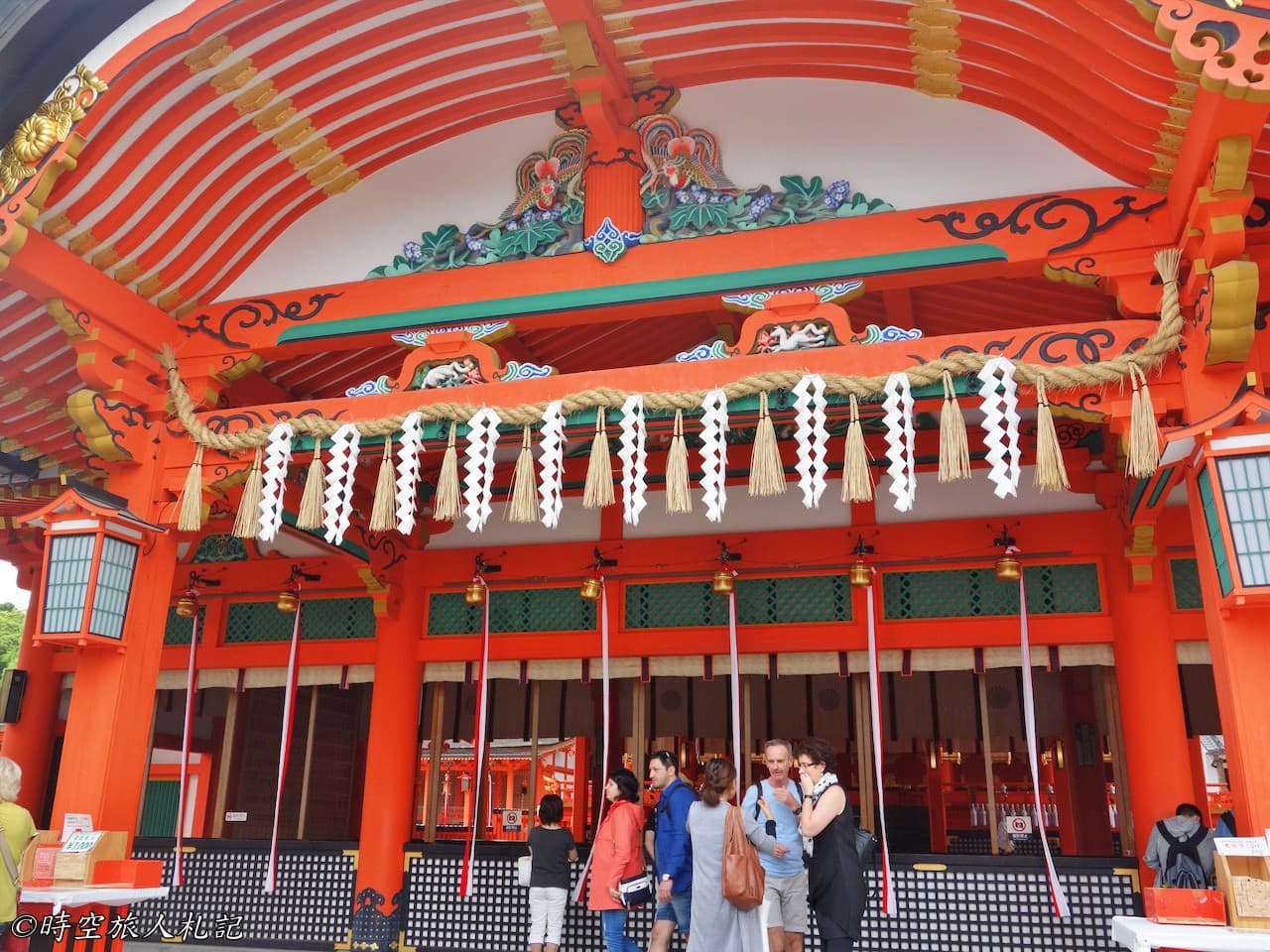
![Kansai, Japan] What are the must-see attractions for a three-day trip to Kyoto for the first time? First visit to Kyoto sightseeing recommendations to organize 6 Kyoto,Kyoto Attractions,Kyoto 3 Days 5](https://blog.travelhackfun.com/wp-content/uploads/2021/06/batch_2017-05-24-12-31-12.jpg)
![Kansai, Japan] What are the must-see attractions for a three-day trip to Kyoto for the first time? Recommendations for the first visit to Kyoto 7 Kyoto,Kyoto Attractions,Kyoto 3 Days 6](https://blog.travelhackfun.com/wp-content/uploads/2021/06/batch_2017-05-24-12-40-50.jpg)
The Senbon Torii is the most representative attraction of Inari Taisha Shrine. It has been a custom since the Edo period to donate torii, and the names of the donors are written on the back of each torii as it is stacked up with donations. The Chimoto Torii has been featured in many movies, the most famous of which is probably Memoirs of a Geisha, and attracts many foreign tourists who come and go all the time.
![Kansai, Japan] What are the must-see attractions for a three-day trip to Kyoto for the first time? First visit to Kyoto sightseeing recommendations to organize 8 Kyoto,Kyoto Attractions,Kyoto 3 Days 7](https://blog.travelhackfun.com/wp-content/uploads/2021/06/batch_2017-05-24-13-01-32.jpg)
![Kansai, Japan] What are the must-see attractions for a three-day trip to Kyoto for the first time? The first visit to Kyoto attractions recommended organization 9 Kyoto,Kyoto Attractions,Kyoto 3 Days 8](https://blog.travelhackfun.com/wp-content/uploads/2021/06/batch_2017-05-24-13-09-17.jpg)
![Kansai, Japan] What are the must-see attractions for a three-day trip to Kyoto? Recommendations for the first visit to Kyoto to organize 10 Kyoto,Kyoto Attractions,Kyoto 3 Days 9](https://blog.travelhackfun.com/wp-content/uploads/2021/06/batch_2017-05-24-12-50-14.jpg)
Kyoto Attractions | Kyoto Kiyomizu Temple | Shimizu Walking Trail
Kiyomizudera is one of the most famous sightseeing spots in Kyoto, and not having visited it is like not having been to Kyoto. The most direct way to get to Kiyomizudera is to take a bus and walk up Kiyomizudera along Kiyomizusaka. The streets around Kiyomizudera are quaint, and the route downhill from Kiyomizudera to Yasaka Shrine is the so-called Kiyomizu Stroll Route, which passes by attractions on the Ninen-zaka, Ninen-zaka, and Higashiyama-Senmon Roads. Walking down the Ninen-zaka and Ninen-zaka, which attracts a lot of people, you will come to the Higashiyama-Senpōdō (東山參道) in the direction of Gojō, which is rich in historical significance, including the Kodaiji Temple and the Enteiin Temple.
Kiyomizu Temple
Kiyomizu-dera Temple, built in 780 AD, is the oldest temple in Kyoto and is listed as a World Heritage Site. Follow the route and climb up to the temple to see the Inoue Gate, Oyafuji Waterfall (drinking it will make you live a long life), Daikokuten, Jishu Shrine, Kiyomizudera Main Hall, etc. The temple itself is a world heritage site. The Inoue Gate is very impressive and is a World Heritage Site in its own right. When I climbed up to Kiyomizudera Temple and looked back at Kiyomizusaka and Inoue Gate, although it was a rainy day, it still looked very grand.
![Kansai, Japan] What are the must-see attractions for a three-day trip to Kyoto for the first time? First visit to Kyoto sightseeing recommendations to organize 11 Kyoto,Kyoto Attractions,Kyoto 3 Days 10](https://blog.travelhackfun.com/wp-content/uploads/2021/06/batch_2017-05-24-14-41-21.jpg)
![Kansai, Japan] What are the must-see attractions for a three-day trip to Kyoto for the first time? First visit to Kyoto attractions recommended organization 12 Kyoto,Kyoto Attractions,Kyoto 3 Days 11](https://blog.travelhackfun.com/wp-content/uploads/2021/06/batch_2017-05-24-14-48-02.jpg)
![Kansai, Japan] What are the must-see attractions for a three-day trip to Kyoto for the first time? First visit to Kyoto sightseeing recommendations to organize 13 Kyoto,Kyoto Attractions,Kyoto 3 Days 12](https://blog.travelhackfun.com/wp-content/uploads/2021/06/batch_2017-05-24-14-56-07.jpg)
![Kansai, Japan] What are the must-see attractions for a three-day trip to Kyoto for the first time? Recommendations for the first visit to Kyoto 14 Kiyomizu Temple, Kyoto](https://blog.travelhackfun.com/wp-content/uploads/2021/06/batch_2017-05-24-15-17-58.jpg)
The main hall of Kiyomizu Temple is located on the cliff of Okuyama Mountain, mainly dedicated to Senju Kannon. The main hall is located on the cliffs of Okuyama, and the main hall is dedicated to Senju Kannon. There were still a lot of visitors, but unfortunately, I couldn't see the Kiyomizu Stage, which I was looking forward to the most. The Kiyomizu stage is a terrace that extends over the main hall. You can enjoy a beautiful view of the mountains from the Shimizu Stage, which is especially beautiful in spring and fall. Another special feature of the Shimizu Stage is that no nails were used in the construction of the stage. Instead, large pieces of wood were supported by traditional mortise and tenon joints, making it a purely wooden structure.
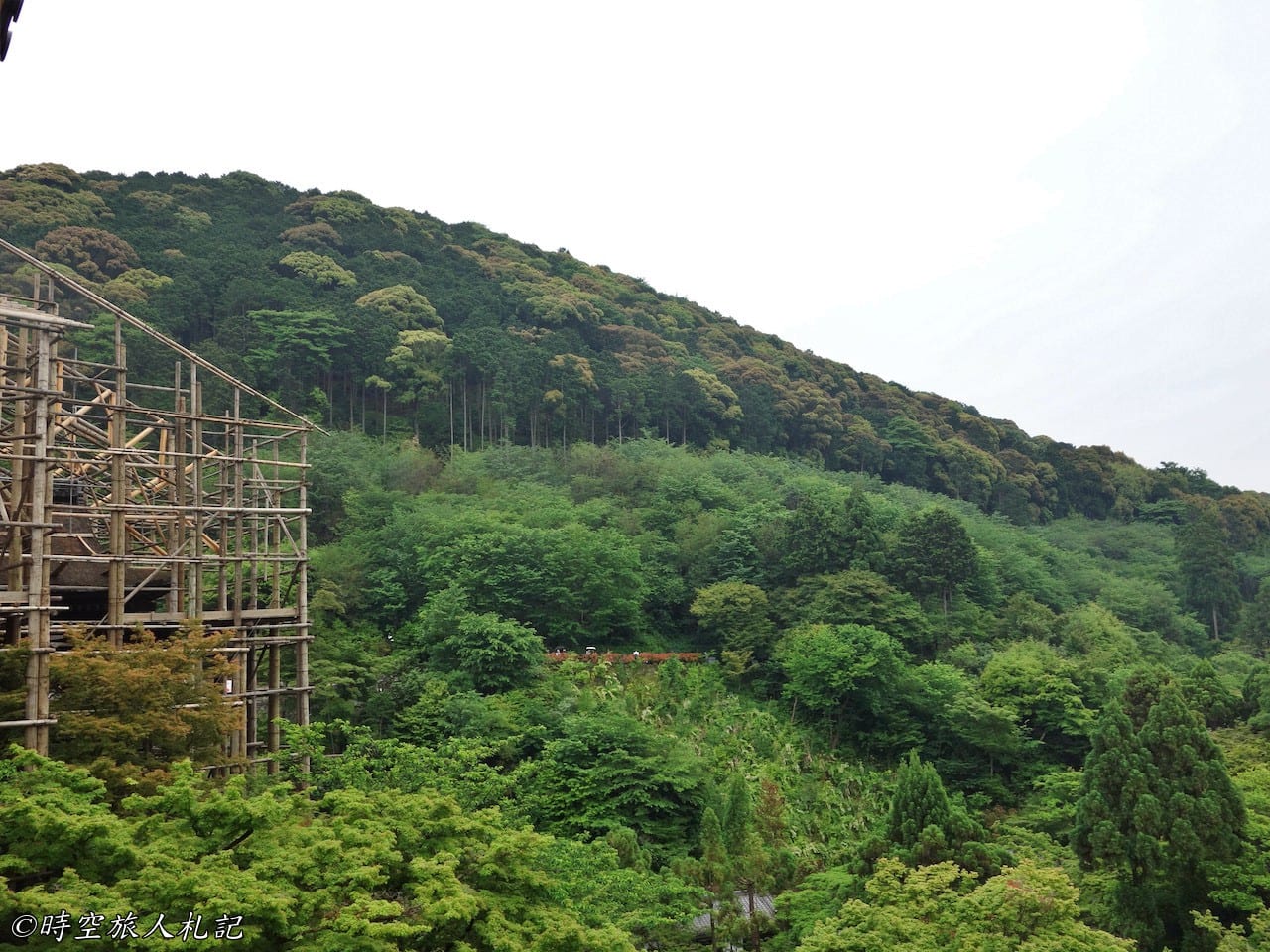
![Kansai, Japan] What are the must-see attractions for a three-day trip to Kyoto for the first time? First visit to Kyoto sightseeing recommendations to organize 16 Kyoto,Kyoto Attractions,Kyoto 3 Days 14](https://blog.travelhackfun.com/wp-content/uploads/2021/06/batch_2017-05-24-15-17-18.jpg)
![Kansai, Japan] What are the must-see attractions for a three-day trip to Kyoto for the first time? First visit to Kyoto attractions recommended organization 17 Kyoto,Kyoto Attractions,Kyoto 3 Days Tour 15](https://blog.travelhackfun.com/wp-content/uploads/2021/06/batch_2017-05-24-15-18-37.jpg)
The Kiyomizudera Triple Pagoda was built in the early Edo period and is the largest triple pagoda in Japan, standing at a height of about 31 meters.
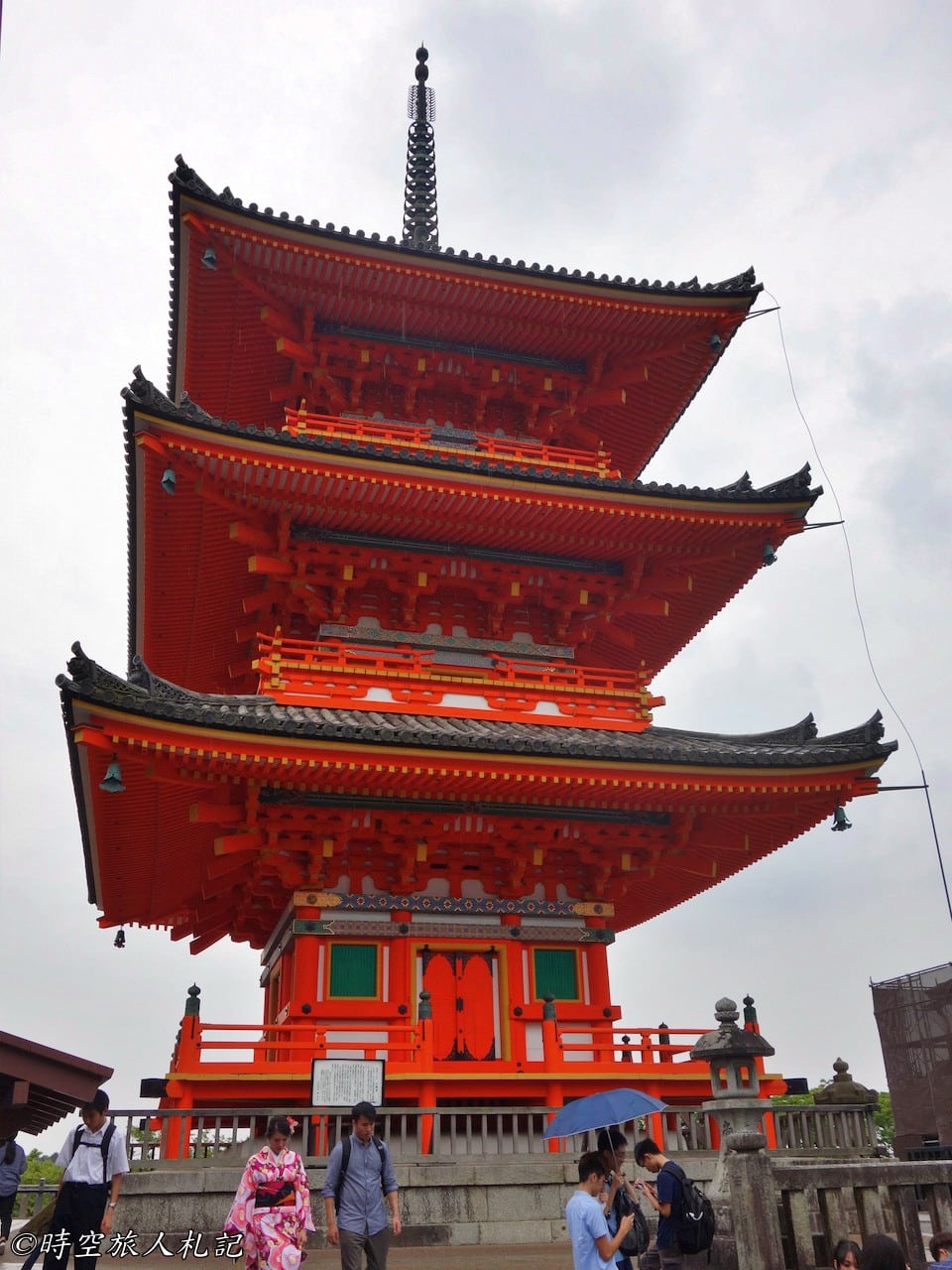
![Kansai, Japan] What are the must-see attractions for a three-day trip to Kyoto for the first time? First visit to Kyoto attractions recommended organization 19 Kyoto,Kyoto Attractions,Kyoto 3 Days Tour 17](https://blog.travelhackfun.com/wp-content/uploads/2021/06/batch_2017-05-24-15-48-53.jpg)
Ninen-zaka | Sannen-zaka
Descending from Kiyomizudera Temple, along the Sanzen-zaka (also known as Yasunin-zaka), you will come to the Ninen-zaka and Ninen-no-do paths. These are old paths made of stone slabs and lined with traditional Japanese buildings, giving them a unique flavor. The history of Ninen-zaka dates back to the pre-Heian period, and most of the buildings you can see today were built after the Meiji period. There are also many restaurants and stores along the old road, so you can spend an afternoon strolling around. For those who like to shop, you can walk to Aoyagi Garden, an old-fashioned shopping complex that houses specialty stores for sauces and incense, as well as cafes, many of which are representative of Kyoto's famous stores. It is located in the eastern part of Kyoto's Imperial Palace and is named after the four gods of the east, the green dragons. The stores here close around dusk, so if you want to go shopping, remember to come before the afternoon.
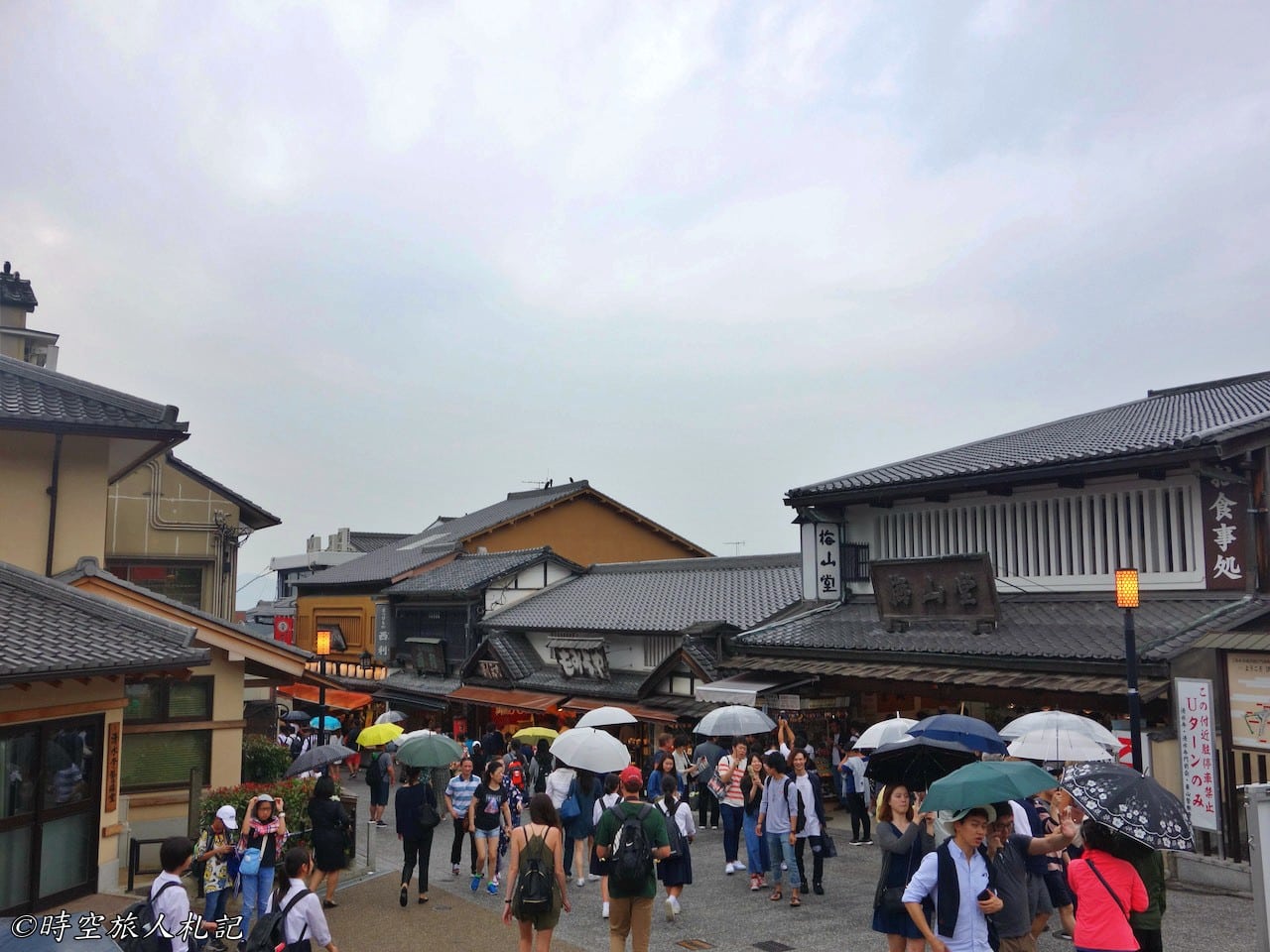

![Kansai, Japan] What are the must-see attractions for a three-day trip to Kyoto for the first time? First visit to Kyoto sightseeing recommendations to organize 22 Kyoto,Kyoto Attractions,Kyoto 3 Days Tour 20](https://blog.travelhackfun.com/wp-content/uploads/2021/06/batch_2017-05-24-16-50-46.jpg)

![Kansai, Japan] What are the must-see attractions in Kyoto for the first time? Recommendations for the first visit to Kyoto 24 Ōnensaka, a city in Japan with a large number of islands](https://blog.travelhackfun.com/wp-content/uploads/2021/06/batch_2017-05-24-17-05-26.jpg)

Kotaiji Temple
The story of Ning Ning and Hideyoshi must be told when you come to Kodaiji. During the Sengoku period, Ning Ning was the adopted daughter of the Asano family, a lower-ranking samurai of the Owari Kingdom, and instead of marrying a samurai of her family's choice, Ning Ning married Oda Nobunaga's retainer, Kinoshita Fujiyoshiro, who would later become Toyotomi Hideyoshi. Toyotomi Hideyoshi was regarded as a monkey by his relatives, but he eventually unified the world. Toyotomi Hideyoshi had many concubines, but he kept Ning, who never had any children, as his wife. Later, Ning became the first lady of Japan, Kitamasa, and after the fall of the Toyotomi family, she retired from politics and lived the rest of her life under the protection of the Mofu at the present location of Kodaiji Temple.
As it is the highest point in the neighborhood, the view of Sanzenzaka from here is quite good. The Reizan Kannon Buddha next to Kodaiji Temple is the largest Buddha statue in Kyoto, standing 24 meters tall, and is a famous cherry blossom viewing spot when the cherry blossoms are in full bloom around it.
![Kansai, Japan] What are the must-see attractions for a three-day trip to Kyoto for the first time? First visit to Kyoto sightseeing recommendations to organize 26 Higashiyamasendo Kyoto Walking Trail](https://blog.travelhackfun.com/wp-content/uploads/2021/06/batch_2017-05-24-17-24-50-1.jpg)
![Kansai, Japan] What are the must-see attractions for a three-day trip to Kyoto for the first time? Recommendations for the first visit to Kyoto 27 Kyoto,Kyoto Attractions,Kyoto 3 Days Tour 22](https://blog.travelhackfun.com/wp-content/uploads/2021/06/batch_2017-05-24-17-26-21.jpg)
![Kansai, Japan] What are the must-see attractions for a three-day trip to Kyoto for the first time? The first visit to Kyoto sightseeing recommendations to organize 28 Kyoto,Kyoto Attractions,Kyoto 3 Days 23](https://blog.travelhackfun.com/wp-content/uploads/2021/06/batch_2017-05-24-17-28-06.jpg)
![Kansai, Japan] What are the must-see attractions for a three-day trip to Kyoto for the first time? Recommendations for the first visit to Kyoto 29 Kyoto,Kyoto Attractions,Kyoto 3 Days Tour 24](https://blog.travelhackfun.com/wp-content/uploads/2021/06/batch_2017-05-24-17-28-40.jpg)
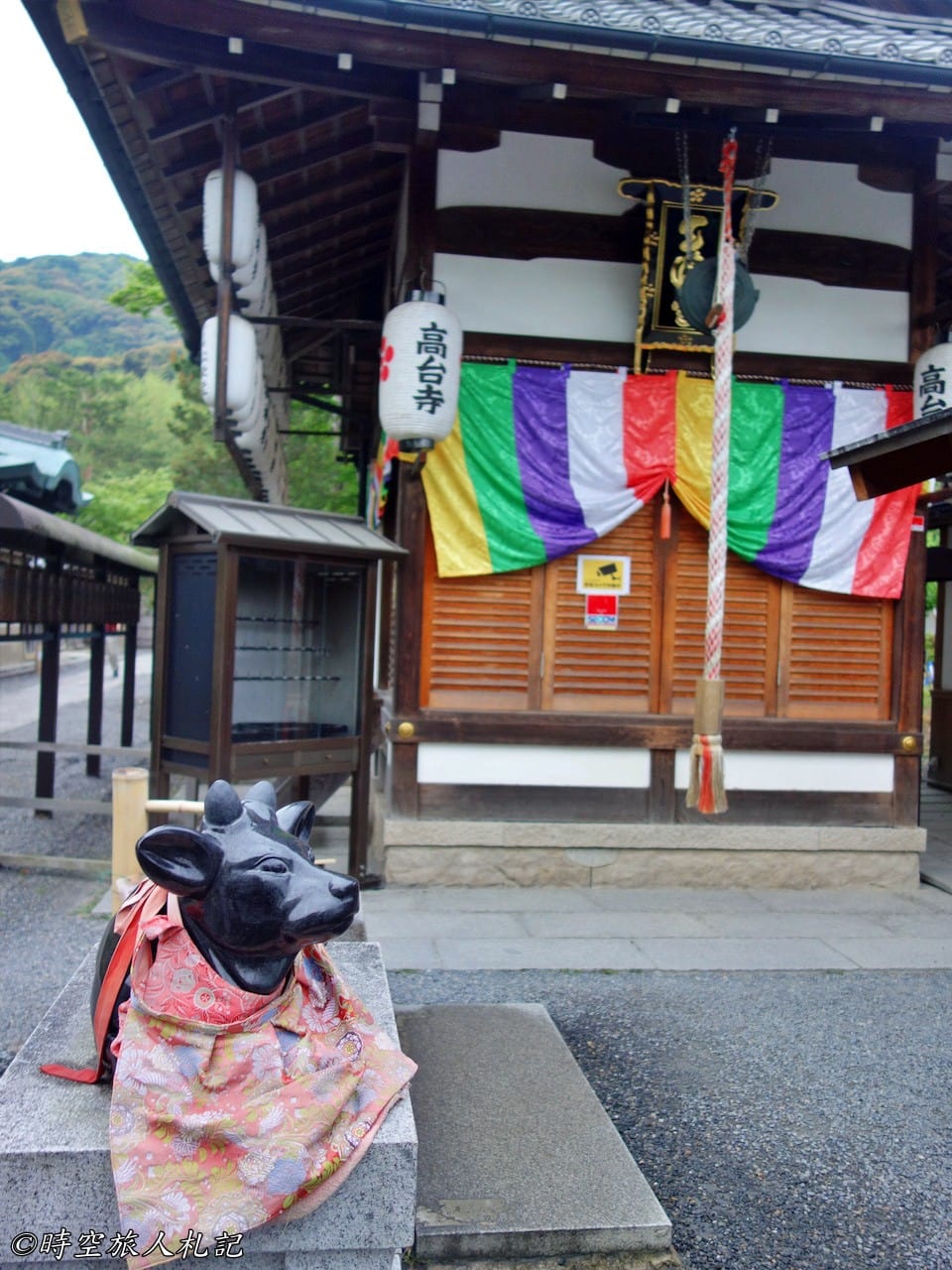
![Kansai, Japan] What are the must-see attractions for a three-day trip to Kyoto for the first time? Recommendations for the first visit to Kyoto 31 Kotaiji Temple](https://blog.travelhackfun.com/wp-content/uploads/2021/06/batch_2017-05-24-17-29-24.jpg)
The path that Ning Ning took to enter and exit the temple became known as the Ning Ning Way, and it is one of the spots that many visitors like to take pictures of. As you walk down the stairs, you will come to the Wisdom Path and the Shinko Path of the ancient Jien-in Temple.
![Kansai, Japan] What are the must-see attractions for a three-day trip to Kyoto for the first time? Recommendations for the first visit to Kyoto 32 Kyoto,Kyoto Attractions,Kyoto 3 Days 26](https://blog.travelhackfun.com/wp-content/uploads/2021/06/batch_2017-05-24-17-34-02.jpg)
![Kansai, Japan] What are the must-see attractions for a three-day trip to Kyoto for the first time? Recommendations for the first visit to Kyoto 33 Kyoto,Kyoto Attractions,Kyoto 3 Days Tour 27](https://blog.travelhackfun.com/wp-content/uploads/2021/06/batch_2017-05-24-17-34-44.jpg)
Yuande Institute
Yuande InstituteIt is the place where Ning Ning died. The third day of every month is the temple fair day for worshiping the Three Faces of Daheitian at the Yuan De Yuan, and it is said to be very spiritual if you come to worship on this day.
![Kansai, Japan] What are the must-see attractions for a three-day trip to Kyoto for the first time? The first visit to Kyoto sightseeing recommendations to organize 34 Kyoto,Kyoto Attractions,Kyoto 3 Days Tour 28](https://blog.travelhackfun.com/wp-content/uploads/2021/06/batch_2017-05-24-17-34-58.jpg)
![Kansai, Japan] What are the must-see attractions for a three-day trip to Kyoto for the first time? The first visit to Kyoto sightseeing recommendations to organize 35 Kyoto,Kyoto Attractions,Kyoto 3 Days 29](https://blog.travelhackfun.com/wp-content/uploads/2021/06/batch_2017-05-24-17-38-17.jpg)
![Kansai, Japan] What are the must-see attractions for a three-day trip to Kyoto for the first time? Recommendations for the first visit to Kyoto 36 Kyoto,Kyoto Attractions,Kyoto 3 Days Tour 30](https://blog.travelhackfun.com/wp-content/uploads/2021/06/batch_2017-05-24-17-38-23.jpg)
Yasaka Shrine
Yasaka ShrineIt is also known as Gion Shrine. The building of Yasaka Shrine is Gion-zukuri, which means that the shrine and the worship hall are divided into two buildings with the same roof, and is also an important cultural property. Yasaka Shrine has a history of 1,000 years, and the Gion Festival held here in July is one of the three major festivals in Kyoto.
![Kansai, Japan] What are the must-see attractions for a three-day trip to Kyoto for the first time? Recommendations for the first visit to Kyoto 37 Kyoto,Kyoto Attractions,Kyoto 3 Days Tour 31](https://blog.travelhackfun.com/wp-content/uploads/2021/06/batch_2017-05-24-17-52-41.jpg)
![Kansai, Japan] What are the must-see attractions for a three-day trip to Kyoto for the first time? The first visit to Kyoto sightseeing recommendations to organize 38 Kyoto,Kyoto Attractions,Kyoto 3 Days 32](https://blog.travelhackfun.com/wp-content/uploads/2021/06/batch_2017-05-24-17-53-36.jpg)
![Kansai, Japan] What are the must-see attractions for a three-day trip to Kyoto? Recommendations for the first visit to Kyoto 39 Kyoto,Kyoto Attractions,Kyoto 3 Days Tour 33](https://blog.travelhackfun.com/wp-content/uploads/2021/06/batch_2017-05-24-17-56-50.jpg)
![Kansai, Japan] What are the must-see attractions for a three-day trip to Kyoto for the first time? Recommendations for the first visit to Kyoto 40 Kyoto,Kyoto Attractions,Kyoto 3 Days Tour 34](https://blog.travelhackfun.com/wp-content/uploads/2021/06/batch_2017-05-24-17-57-18-1.jpg)
![Kansai, Japan] What are the must-see attractions for a three-day trip to Kyoto for the first time? Recommendations for the first visit to Kyoto 41 Kyoto,Kyoto Attractions,Kyoto 3 Days 35](https://blog.travelhackfun.com/wp-content/uploads/2021/06/batch_2017-05-24-17-58-27.jpg)
![Kansai, Japan] What are the must-see attractions for a three-day trip to Kyoto for the first time? Recommendations for the first visit to Kyoto 42 Kyoto,Kyoto Attractions,Kyoto 3 Days 36](https://blog.travelhackfun.com/wp-content/uploads/2021/06/batch_2017-05-24-18-00-30.jpg)
![Kansai, Japan] What are the must-see attractions for a three-day trip to Kyoto for the first time? Recommendations for first-time visitors to Kyoto 43 Yasaka Shrine](https://blog.travelhackfun.com/wp-content/uploads/2021/06/batch_2017-05-24-17-56-21.jpg)
Must-see in Kyoto | Gion Shopping District | Kamogawa Night View
Gion shopping district is a place where famous stores gather. After nightfall, tourists usually focus on this area to continue shopping, have dinner at Hanami Koji, and then go to Kamogawa to find an izakaya for a night view. Gion shopping district is the best place to organize the same day with Kiyomizu temple and Kiyomizu walkway, because the Kiyomizu walkway ends at Yasaka Shrine, and from Yasaka Shrine you can follow Shijo-dori all the way into the Gion shopping district.
Shijo-dori, the main street that runs through the center of Kyoto, extends from the entrance of Yasaka Shrine. In fact, I recommend first time visitors to stay near Shijo-dori.
Looking for Kyoto Accommodation Comparison?
The busiest part of Shijo-dori is the section from Gion to Shijo Umaru. Starting from here, you will pass through Hanami-koji, Kamogawa, and then Shijo Umaru, with many shops on both sides of the road.
![Kansai, Japan] What are the must-see attractions for a three-day trip to Kyoto for the first time? Recommendations for the first visit to Kyoto 44 four-way pass (telecommunications)](https://blog.travelhackfun.com/wp-content/uploads/2021/06/batch_2017-05-24-18-13-28.jpg)
![Kansai, Japan] What are the must-see attractions for a three-day trip to Kyoto for the first time? Recommendations for the first visit to Kyoto 45 Kyoto,Kyoto Attractions,Kyoto 3 Days Tour 37](https://blog.travelhackfun.com/wp-content/uploads/2021/06/batch_2017-05-24-18-19-28.jpg)
Hanami Path
Hanami-koji is a small road located on Gion, the most famous flower street in Kyoto. The houses on Hanami-koji appear to be made of wood with tiled roofs, a design that originated in the Heian period. At that time, the government levied taxes based on the width of the door, so the doors of the houses were usually narrower and the interiors were deeper.
This is also one of the places where geisha memoirs were filmed. At night, Hana-mi-koji is full of taverns and geisha, but nowadays, due to the large number of tourists and the guards protecting the geisha, there are not many chances to meet a geisha. At night, Hanami Street looks mysterious under the lights, and some of the teahouses still maintain the tradition of refusing first-time customers.
![Kansai, Japan] What are the must-see attractions for a three-day trip to Kyoto for the first time? Recommendations for the first visit to Kyoto 46 Kyoto,Kyoto Attractions,Kyoto 3 Days Tour 38](https://blog.travelhackfun.com/wp-content/uploads/2021/06/batch_2017-05-24-18-23-05.jpg)
![Kansai, Japan] What are the must-see attractions for a three-day trip to Kyoto for the first time? Recommendations for the first visit to Kyoto 47 Hanami Path](https://blog.travelhackfun.com/wp-content/uploads/2021/06/batch_2017-05-24-18-23-51.jpg)
![Kansai, Japan] What are the must-see attractions for a three-day trip to Kyoto for the first time? Recommendations for the first visit to Kyoto 48 Kyoto,Kyoto Attractions,Kyoto 3 Days Tour 39](https://blog.travelhackfun.com/wp-content/uploads/2021/06/batch_2017-05-24-18-27-13.jpg)
![Kansai, Japan] What are the must-see attractions for a three-day trip to Kyoto for the first time? Recommendations for the first visit to Kyoto 49 Kyoto,Kyoto Attractions,Kyoto 3 Days Tour 40](https://blog.travelhackfun.com/wp-content/uploads/2021/06/batch_2017-05-24-18-29-49.jpg)
![Kansai, Japan] What are the must-see attractions for a three-day trip to Kyoto? Recommendations for the first visit to Kyoto 50 Kyoto,Kyoto Attractions,Kyoto 3 Days 41](https://blog.travelhackfun.com/wp-content/uploads/2021/06/batch_2017-05-24-18-31-34.jpg)
Kamogawa
The night view of Kamogawa is one of the best in Kyoto. The rows of illuminated hotels next to each other are all old hotels. All the hotels have a floor that extends outward from the river, which is called the "cool floor". Of course, you can watch geisha performances in the teahouses. Find a restaurant here and enjoy a perfect summer night in Kyoto.
![Kansai, Japan] What are the must-see attractions for a three-day trip to Kyoto for the first time? Sightseeing recommendations for the first time in Kyoto 51 Kamogawa](https://blog.travelhackfun.com/wp-content/uploads/2021/06/batch_2017-05-24-18-58-53.jpg)
![Kansai, Japan] What are the must-see attractions for a three-day trip to Kyoto for the first time? Recommendations for the first visit to Kyoto 52 Kyoto,Kyoto Attractions,Kyoto Tour 42](https://blog.travelhackfun.com/wp-content/uploads/2021/06/batch_2017-05-24-19-01-13.jpg)
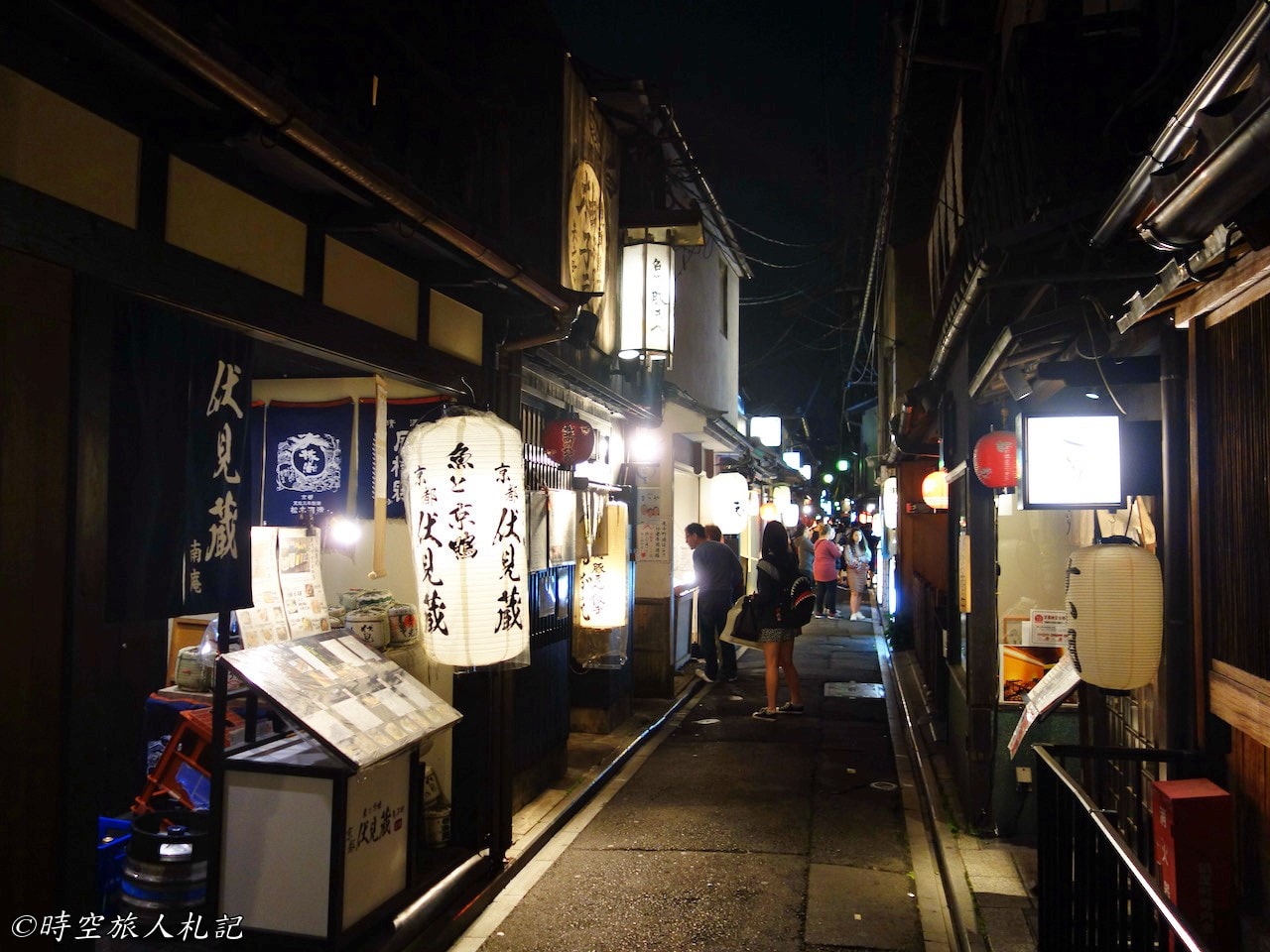
Must-See Attractions in Kyoto | Kinkakuji Temple
Kinkakuji TempleIt was built in 1937 as a place of Zen meditation for Ashikaga Yoshimitsu, a general of the Japanese army. After Ashikaga Yoshimitsu's death, he asked Yume Window Kokushi to open a Zen temple in accordance with his wish, and renamed it as Deer Park Monastery under Ashikaga Yoshimitsu's legal name, with the name of the mountain, Kitayama. The temple was designated as a national treasure by Japan before World War II, and was listed as a World Heritage Site in 1994. However, the current Kinkakuji Temple was not built in 1397, but was rebuilt in 1987. The old Kinkakuji Temple was destroyed in 1950 by a monk trainee who set himself on fire, reportedly because he was jealous of the beauty of Kinkakuji Temple. This incident led to Yukio Mishima's literary work "Kinkakuji".
The entrance ticket to Kinkakuji Temple has a special design, which is made into a goshogu, and it's a good souvenir to take back with you.
![Kansai, Japan] What are the must-see attractions for a three-day trip to Kyoto for the first time? Recommendations for the first visit to Kyoto 54 Kyoto,Kyoto Attractions,Kyoto Tour 44](https://blog.travelhackfun.com/wp-content/uploads/2021/06/batch_2017-05-25-12-07-08-900x1200.jpg)
Kinkakuji is a representative building of the Kitayama culture in Japan. Most people call it Kinkakuji because its main building, the Shariden, is covered with gold leaf. The gleaming Shariden is situated on the green water of the river, and its reflection on the water is as brilliant as the main building, so it is no wonder that it attracts an endless stream of visitors.
![Kansai, Japan] What are the must-see attractions for a three-day trip to Kyoto for the first time? Recommendations for the first visit to Kyoto 55 Kyoto,Kyoto Attractions,Kyoto 3 Days Tour 45](https://blog.travelhackfun.com/wp-content/uploads/2021/06/batch_2017-05-25-11-04-29.jpg)
![Kansai, Japan] What are the must-see attractions for a three-day trip to Kyoto for the first time? Recommendations for the first visit to Kyoto 56 Kyoto,Kyoto Attractions,Kyoto 3 Days 46](https://blog.travelhackfun.com/wp-content/uploads/2021/06/batch_2017-05-25-11-12-01.jpg)
![Kansai, Japan] What are the must-see attractions for a three-day trip to Kyoto for the first time? Recommendations for the first visit to Kyoto 57 Kyoto,Kyoto Attractions,Kyoto 3 Days 47](https://blog.travelhackfun.com/wp-content/uploads/2021/06/batch_2017-05-25-11-08-15.jpg)
![Kansai, Japan] What are the must-see attractions for a three-day trip to Kyoto for the first time? Recommendations for the first visit to Kyoto 58 Kinkakuji Temple](https://blog.travelhackfun.com/wp-content/uploads/2021/06/batch_2017-05-25-11-11-37.jpg)
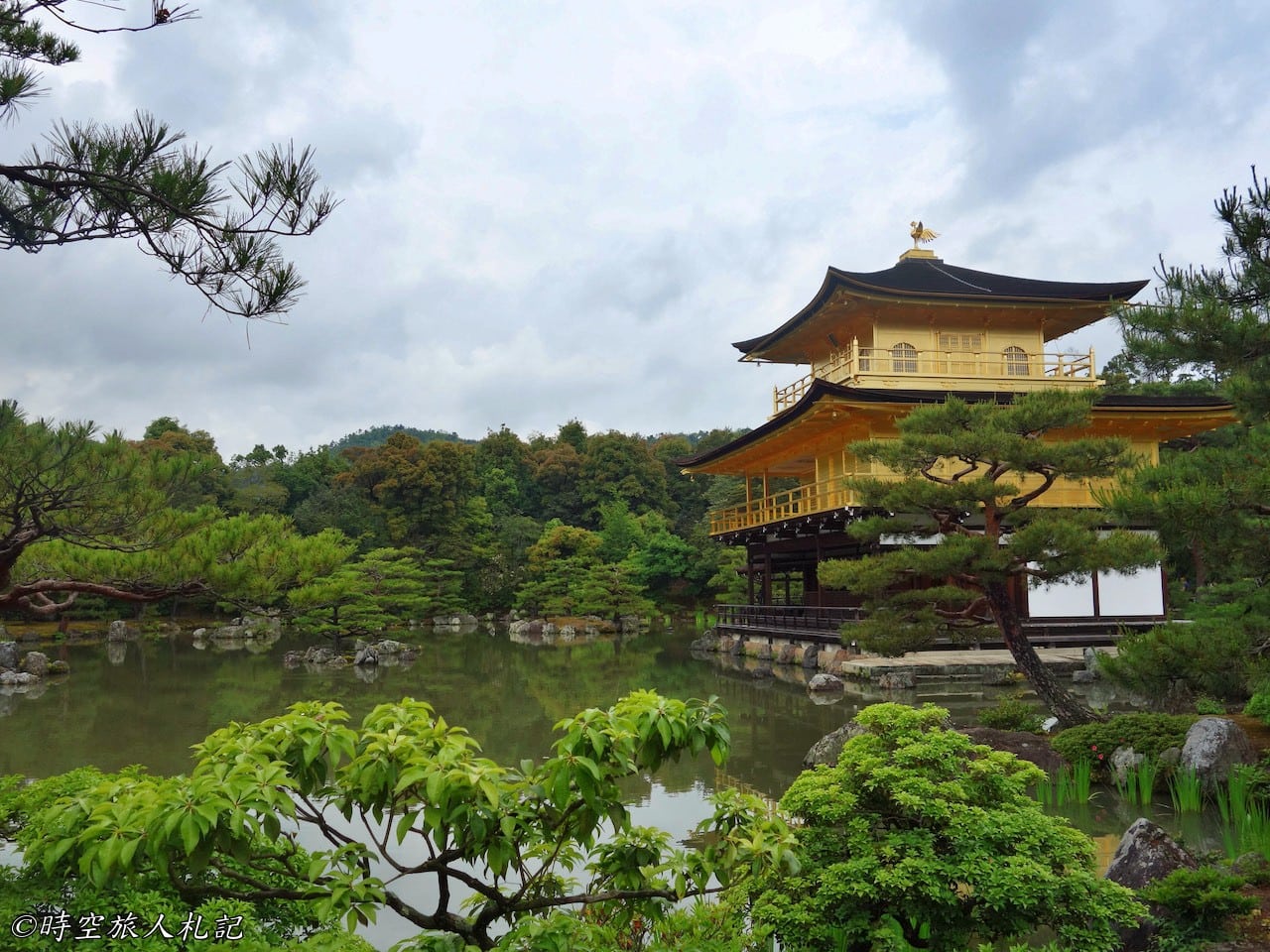
There are three floors in the Shrine, which are harmonized with different architectural styles. The first floor is Hosui-in, a dormitory building. The second floor is the Shioin-dong, a samurai mansion style building. The third floor is a dome, which was built in the Chinese Tang Dynasty style. At the top stands a golden phoenix, symbolizing good fortune.
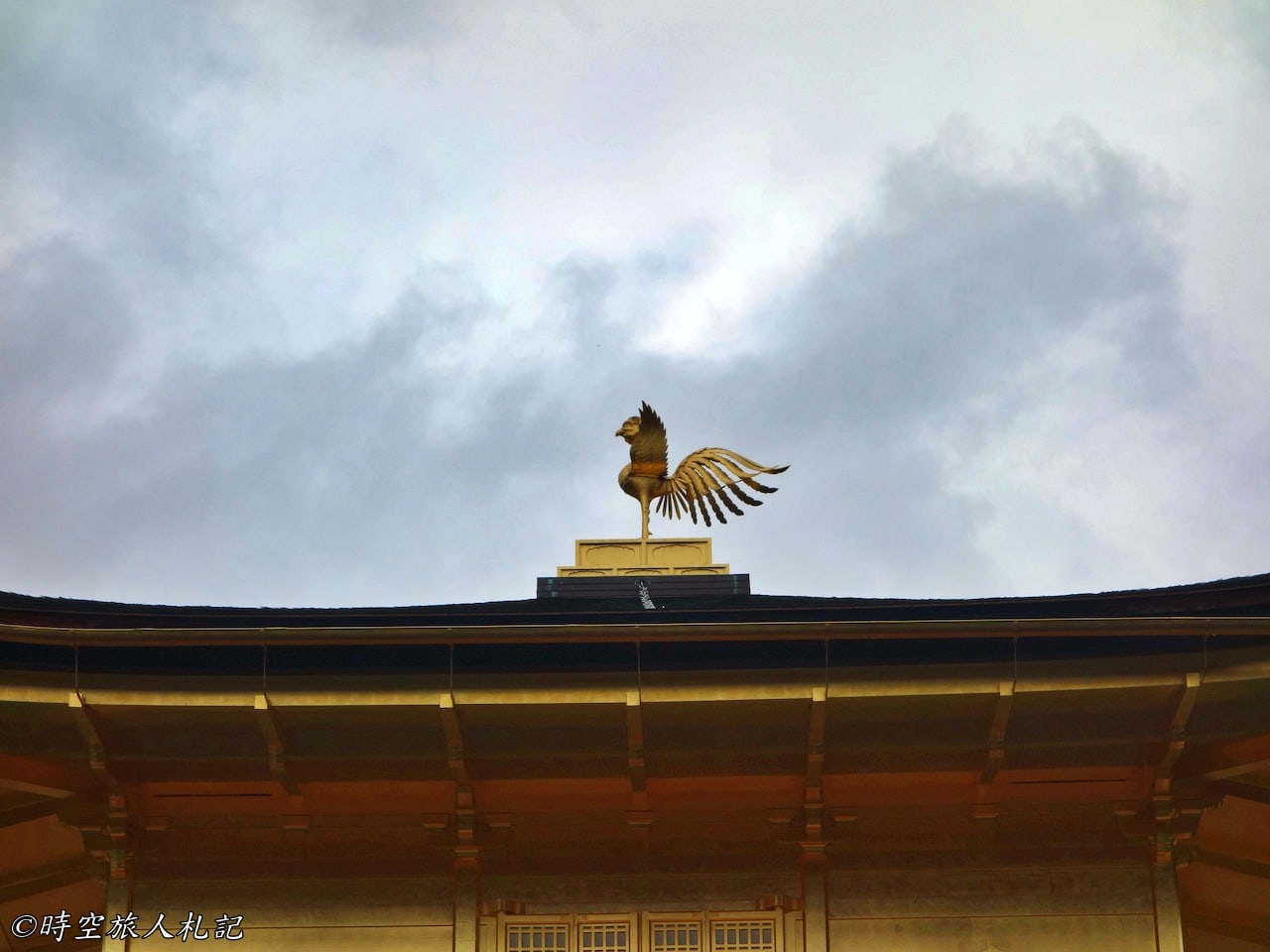
![Kansai, Japan] What are the must-see attractions for a three-day trip to Kyoto for the first time? Recommendations for the first visit to Kyoto 61 Kyoto,Kyoto Attractions,Kyoto 3 Days Tour 50](https://blog.travelhackfun.com/wp-content/uploads/2021/06/batch_2017-05-25-11-18-54.jpg)
![Kansai, Japan] What are the must-see attractions for a three-day trip to Kyoto? Recommendations for the first visit to Kyoto 62 Kyoto,Kyoto Attractions,Kyoto 3 Days 51](https://blog.travelhackfun.com/wp-content/uploads/2021/06/batch_2017-05-25-11-29-55.jpg)
![Kansai, Japan] What are the must-see attractions for a three-day trip to Kyoto for the first time? Recommendations for the first visit to Kyoto 63 Kyoto,Kyoto Attractions,Kyoto 3 Days 52](https://blog.travelhackfun.com/wp-content/uploads/2021/06/batch_2017-05-25-11-36-18.jpg)
![Kansai, Japan] What are the must-see attractions for a three-day trip to Kyoto for the first time? Recommendations for the first visit to Kyoto 64 Kyoto,Kyoto Attractions,Kyoto 3 Days Tour 53](https://blog.travelhackfun.com/wp-content/uploads/2021/06/batch_2017-05-25-11-45-04.jpg)
![Kansai, Japan] What are the must-see attractions for a three-day trip to Kyoto for the first time? Recommendations for the first visit to Kyoto 65 Kyoto,Kyoto Attractions,Kyoto 3 Days 54](https://blog.travelhackfun.com/wp-content/uploads/2021/06/batch_2017-05-25-11-38-37.jpg)
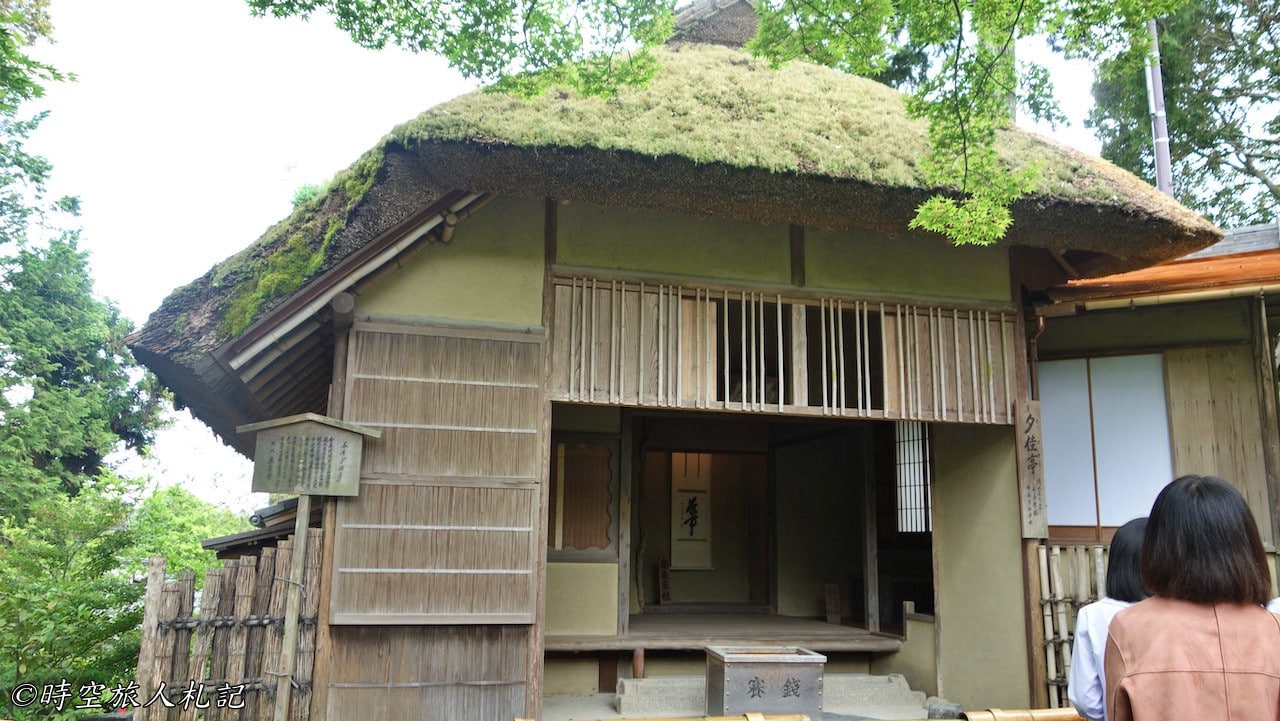
Must-see Attractions in Kyoto | Nishiki Market
The 400-year-old Nishiki Market is a must-see in Kyoto. Nishiki Market is located in Nishiki-koji-dori, which is 390 meters long and is known as the kitchen of Kyoto.
![Kansai, Japan] What are the must-see attractions for a three-day trip to Kyoto for the first time? Recommendations for the first visit to Kyoto 67 Kyoto,Kyoto Attractions,Kyoto 3 Days 56](https://blog.travelhackfun.com/wp-content/uploads/2021/06/batch_2017-05-25-14-42-02.jpg)
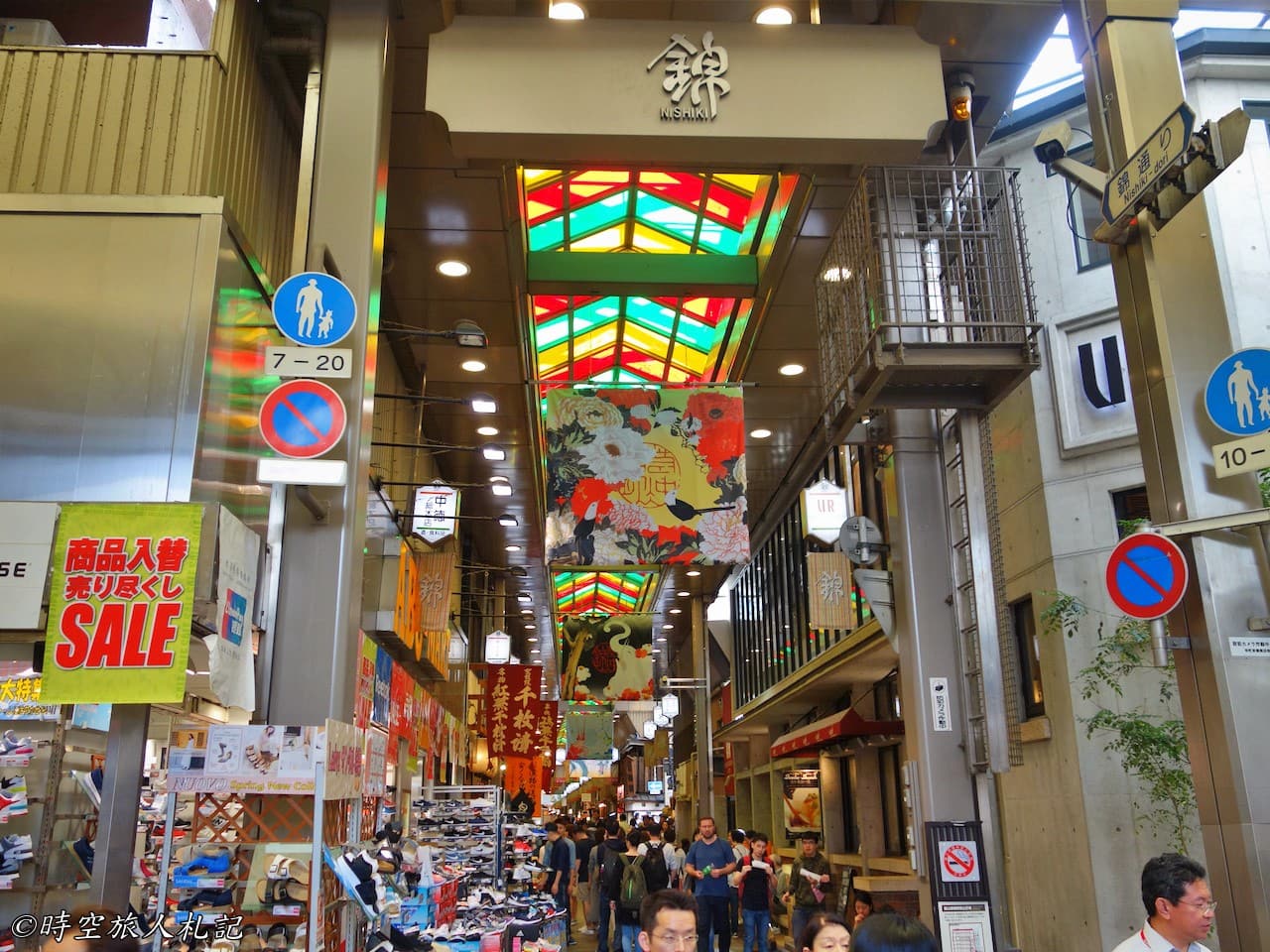
There are about 140 stores here, including a fresh food market, a variety of snacks, and a Kyoto pickle store and a Kyoto vegetable store, which are both worth visiting. When you come to Nishiki Market, of course, you have to visitI'm here to eat.I've recorded all the delicious ones here:
![Kansai, Japan] What are the must-see attractions for a three-day trip to Kyoto for the first time? Recommendations for the first visit to Kyoto 69 Kyoto,Kyoto Attractions,Kyoto 3 Days 57](https://blog.travelhackfun.com/wp-content/uploads/2021/06/batch_2017-05-25-14-44-21.jpg)

![Kansai, Japan] What are the must-see attractions for a three-day trip to Kyoto for the first time? Recommendations for the first visit to Kyoto 71 Kyoto,Kyoto Attractions,Kyoto 3 Days 59](https://blog.travelhackfun.com/wp-content/uploads/2021/06/batch_2017-05-25-14-52-58.jpg)

![Kansai, Japan] What are the must-see attractions for a three-day trip to Kyoto for the first time? Recommendations for the first visit to Kyoto 73 Kyoto,Kyoto Attractions,Kyoto 3 Days 61](https://blog.travelhackfun.com/wp-content/uploads/2021/06/batch_2017-05-25-14-55-18.jpg)
![Kansai, Japan] What are the must-see attractions for a three-day trip to Kyoto for the first time? Recommendations for the first visit to Kyoto 74 Kyoto,Kyoto Attractions,Kyoto 3 Days 62](https://blog.travelhackfun.com/wp-content/uploads/2021/06/batch_2017-05-25-15-05-31.jpg)
At the eastern end of Nishiki Market is Nishitenmangu Shrine. This shrine is dedicated to Sugawara Michizane, the god of learning, and was built in the early Heian period (early 10th century). There are many plum trees in the area, which can be enjoyed in February and March. As luck would have it, there was a performance in front of Tenmangu Shrine.
![Kansai, Japan] What are the must-see attractions for a three-day trip to Kyoto for the first time? Recommendations for the first visit to Kyoto 75 Kyoto,Kyoto Attractions,Kyoto 3 Days 63](https://blog.travelhackfun.com/wp-content/uploads/2021/06/batch_2017-05-25-15-12-13.jpg)
![Kansai, Japan] What are the must-see attractions for a three-day trip to Kyoto for the first time? Recommendations for the first visit to Kyoto 76 Kam Tin Full Palace](https://blog.travelhackfun.com/wp-content/uploads/2021/06/batch_2017-05-25-15-12-34.jpg)
![Kansai, Japan] What are the must-see attractions for a three-day trip to Kyoto for the first time? Recommendations for the first visit to Kyoto 77 Kyoto,Kyoto Attractions,Kyoto 3 Days 64](https://blog.travelhackfun.com/wp-content/uploads/2021/06/batch_2017-05-25-16-14-29.jpg)
Must-See Attractions in Kyoto | Nijo Castle
Eijo CastleBuilt at the beginning of the Edo period, it was the residence of the Tokugawa family, which witnessed the rise and fall of the Tokugawa period. We know that the Tokugawa family was the first shogun of the Edo Shogunate, and since it was the residence of the shogun's family in Kyoto, of course, the building was very, very gorgeous. The city was divided into three areas, with Honmaru as the main defense and Ninomaru-miyake as the second defense. There are a lot of monuments in Kyoto that are worth visiting, and Nijo Castle is one of the most important and impressive ones that should not be missed.
Kyoto | Arashiyama
Arashiyama is located a little far from Kyoto City, so it is a good place for a day trip. Transportation can be by train or bus. The main attractions include Tenryu-ji Temple, Saga Bamboo Forest and Nonomiya Shrine. The route of a day trip depends on the means of transportation. If you come to Arashiyama on Bus No. 28 on a six-day trip, you will arrive at Arashiyama Park Station and depart from Arashiyama Park; if you come to Arashiyama Station on a train, you will depart from Saga Bamboo Grove, which is located just outside of the north gate of Tenryu-ji Temple.
The following route starts from Arashiyama Park, then walks to Omotoyama Tenryu-ji Temple, Saga Bamboo Forest and Nonomiya Shrine. After walking through the bamboo forest, you can go out to Arashiyama Street,Eat something.There are also many temples and shrines along the way. After strolling through Watanuki Bridge, you can walk along the river towards Kameyama Park with a nice view.
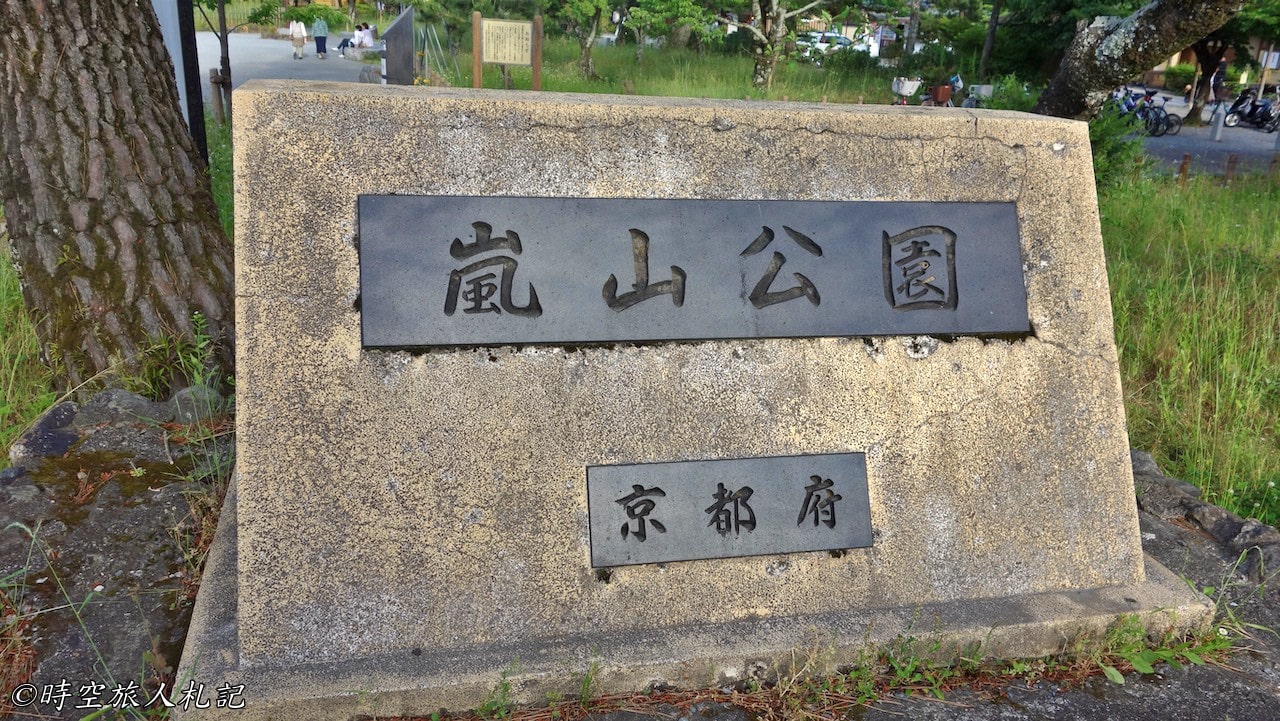
![Kansai, Japan] What are the must-see attractions for a three-day trip to Kyoto? Recommendations for the first visit to Kyoto 79 Kyoto,Kyoto Attractions,Kyoto 3 Days 66](https://blog.travelhackfun.com/wp-content/uploads/2021/06/batch_2017-05-27-15-41-55.jpg)
![Kansai, Japan] What are the must-see attractions for a three-day trip to Kyoto for the first time? Recommendations for the first visit to Kyoto 80 Kyoto,Kyoto Attractions,Kyoto 3 Days 67](https://blog.travelhackfun.com/wp-content/uploads/2021/06/batch_2017-05-27-15-42-42.jpg)
![Kansai, Japan] What are the must-see attractions for a three-day trip to Kyoto for the first time? Recommendations for the first visit to Kyoto 81 Kyoto,Kyoto Attractions,Kyoto 3 Days 68](https://blog.travelhackfun.com/wp-content/uploads/2021/06/batch_2017-05-27-15-50-33.jpg)
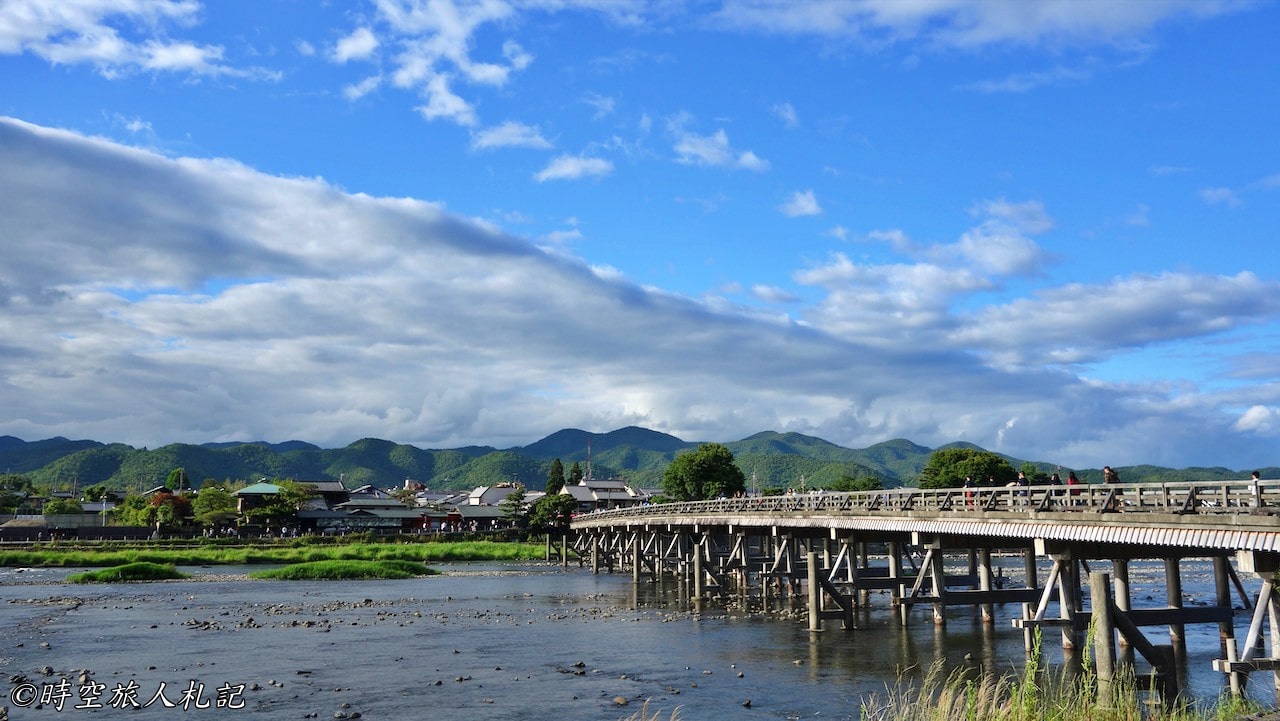
Daibonsan Tenryuji
Daibonsan TenryujiIt is the first of the five mountains in Kyoto and one of the World Heritage Sites in Kyoto. Tenryu-ji Temple was established by the Ashikaga clan of Muromachi Mufu for the late Emperor Go-Daigo. Ashikaga Zunji was an important figure in the beginning of the Northern and Southern Dynasties in Japan. Simply put, Ashikaga Zunji originally supported Emperor Go-Daigo and betrayed the Kamakura Mufu of the time, but later changed his support to Emperor Komyo (Northern Dynasty) and drove Emperor Go-Daigo to the South (Southern Dynasty) because of the establishment of the autocratic regime by Emperor Go-Daigo which weakened the status of the shoguns. After the death of Emperor Go-Daigo, Ashikaga Takashi established this temple with a sense of conscience.

![Kansai, Japan] What are the must-see attractions for a three-day trip to Kyoto for the first time? Recommendations for the first visit to Kyoto 84 Kyoto,Kyoto Attractions,Kyoto 3 Days 71](https://blog.travelhackfun.com/wp-content/uploads/2021/06/batch_2017-05-27-12-13-46.jpg)
![Kansai, Japan] What are the must-see attractions for a three-day trip to Kyoto for the first time? Recommendations for the first visit to Kyoto 85 Kyoto,Kyoto Attractions,Kyoto 3 Days 72](https://blog.travelhackfun.com/wp-content/uploads/2021/06/batch_2017-05-27-12-18-42.jpg)
![Kansai, Japan] What are the must-see attractions for a three-day trip to Kyoto for the first time? Recommendations for the first visit to Kyoto 86 Kyoto,Kyoto Attractions,Kyoto 3 Days 73](https://blog.travelhackfun.com/wp-content/uploads/2021/06/batch_2017-05-27-12-21-53.jpg)
The main attraction of Tenryu-ji Temple is the Sogen Pond Garden. The garden is the work of Yume Window Kokushi, who skillfully used Atago and Kokura mountains on the right, Kameyama on the front, and Arashiyama on the left as the background.
![Kansai, Japan] What are the must-see attractions for a three-day trip to Kyoto for the first time? Recommendations for the first visit to Kyoto 87 Daibonsan Tenryuji](https://blog.travelhackfun.com/wp-content/uploads/2021/06/batch_2017-05-27-12-32-21.jpg)
![Kansai, Japan] What are the must-see attractions for a three-day trip to Kyoto for the first time? First visit to Kyoto sightseeing recommendations to organize 88 Kyoto,Kyoto Attractions,Kyoto 3 Days 74](https://blog.travelhackfun.com/wp-content/uploads/2021/06/batch_2017-05-27-13-04-27-1.jpg)
![Kansai, Japan] What are the must-see attractions for a three-day trip to Kyoto for the first time? Recommendations for the first visit to Kyoto 89 Kyoto,Kyoto Attractions,Kyoto 3 Days 75](https://blog.travelhackfun.com/wp-content/uploads/2021/06/batch_2017-05-27-13-05-35.jpg)
![Kansai, Japan] What are the must-see attractions for a three-day trip to Kyoto? Recommendations for the first visit to Kyoto 90 Kyoto,Kyoto Attractions,Kyoto 3 Days 76](https://blog.travelhackfun.com/wp-content/uploads/2021/06/batch_2017-05-27-13-15-40.jpg)
![Kansai, Japan] What are the must-see attractions for a three-day trip to Kyoto for the first time? Recommendations for the first visit to Kyoto 91 Arashiyama One-day Tour Daihonzan Tenryuji Temple Choenchi Garden](https://blog.travelhackfun.com/wp-content/uploads/2021/06/batch_2017-05-27-13-49-42.jpg)
To appreciate the garden of Tsao Yuan Chi, it is best to enter the Abbot's College, the largest building in Tenryu Temple. The best place to view the garden is from the Great Abbot's Cloister. Visitors can enjoy the garden from the Abbot's Cloister, where they can lie down or sit quietly.
![Kansai, Japan] What are the must-see attractions for a three-day trip to Kyoto for the first time? Recommendations for the first visit to Kyoto 92 Kyoto,Kyoto Attractions,Kyoto 3 Days 77](https://blog.travelhackfun.com/wp-content/uploads/2021/06/batch_2017-05-27-12-24-56.jpg)
![Kansai, Japan] What are the must-see attractions for a three-day trip to Kyoto for the first time? Recommendations for the first visit to Kyoto 93 Kyoto,Kyoto Attractions,Kyoto 3 Days 78](https://blog.travelhackfun.com/wp-content/uploads/2021/06/batch_2017-05-27-12-28-49.jpg)
![Kansai, Japan] What are the must-see attractions for a three-day trip to Kyoto for the first time? Recommendations for the first visit to Kyoto 94 Kyoto,Kyoto Attractions,Kyoto 3 Days 79](https://blog.travelhackfun.com/wp-content/uploads/2021/06/batch_2017-05-27-12-54-50.jpg)
![Kansai, Japan] What are the must-see attractions for a three-day trip to Kyoto for the first time? Recommendations for the first visit to Kyoto 95 Kyoto,Kyoto Attractions,Kyoto 3 Days Tour 80](https://blog.travelhackfun.com/wp-content/uploads/2021/06/batch_2017-05-27-13-43-23-1.jpg)
![Kansai, Japan] What are the must-see attractions for a three-day trip to Kyoto? Recommendations for the first visit to Kyoto 96 Kyoto,Kyoto Attractions,Kyoto 3 Days 81](https://blog.travelhackfun.com/wp-content/uploads/2021/06/batch_2017-05-27-13-45-29.jpg)
![Kansai, Japan] What are the must-see attractions for a three-day trip to Kyoto for the first time? Recommendations for the first visit to Kyoto 97 Kyoto,Kyoto Attractions,Kyoto 3 Days 82](https://blog.travelhackfun.com/wp-content/uploads/2021/06/batch_2017-05-27-13-44-28.jpg)
Saga Bamboo Forest
Leave the north gate of Tenryu-ji Temple and enter the Bamboo Trail. This is a quiet and beautiful Japanese style trail. If you take the train to Arashiyama Station, you will leave from the bamboo forest.
![Kansai, Japan] What are the must-see attractions for a three-day trip to Kyoto for the first time? Recommendations for the first visit to Kyoto 98 Kyoto,Kyoto Attractions,Kyoto 3 Days 83](https://blog.travelhackfun.com/wp-content/uploads/2021/06/batch_2017-05-27-13-19-32.jpg)
![Kansai, Japan] What are the must-see attractions for a three-day trip to Kyoto? Recommendations for the first visit to Kyoto 99 Kyoto,Kyoto Attractions,Kyoto 3 Days 84](https://blog.travelhackfun.com/wp-content/uploads/2021/06/batch_2017-05-27-13-23-07.jpg)
![Kansai, Japan] What are the must-see attractions for a three-day trip to Kyoto for the first time? Recommendations for the first visit to Kyoto 100 Kyoto,Kyoto Attractions,Kyoto 3 Days 85](https://blog.travelhackfun.com/wp-content/uploads/2021/06/batch_2017-05-27-13-27-51.jpg)
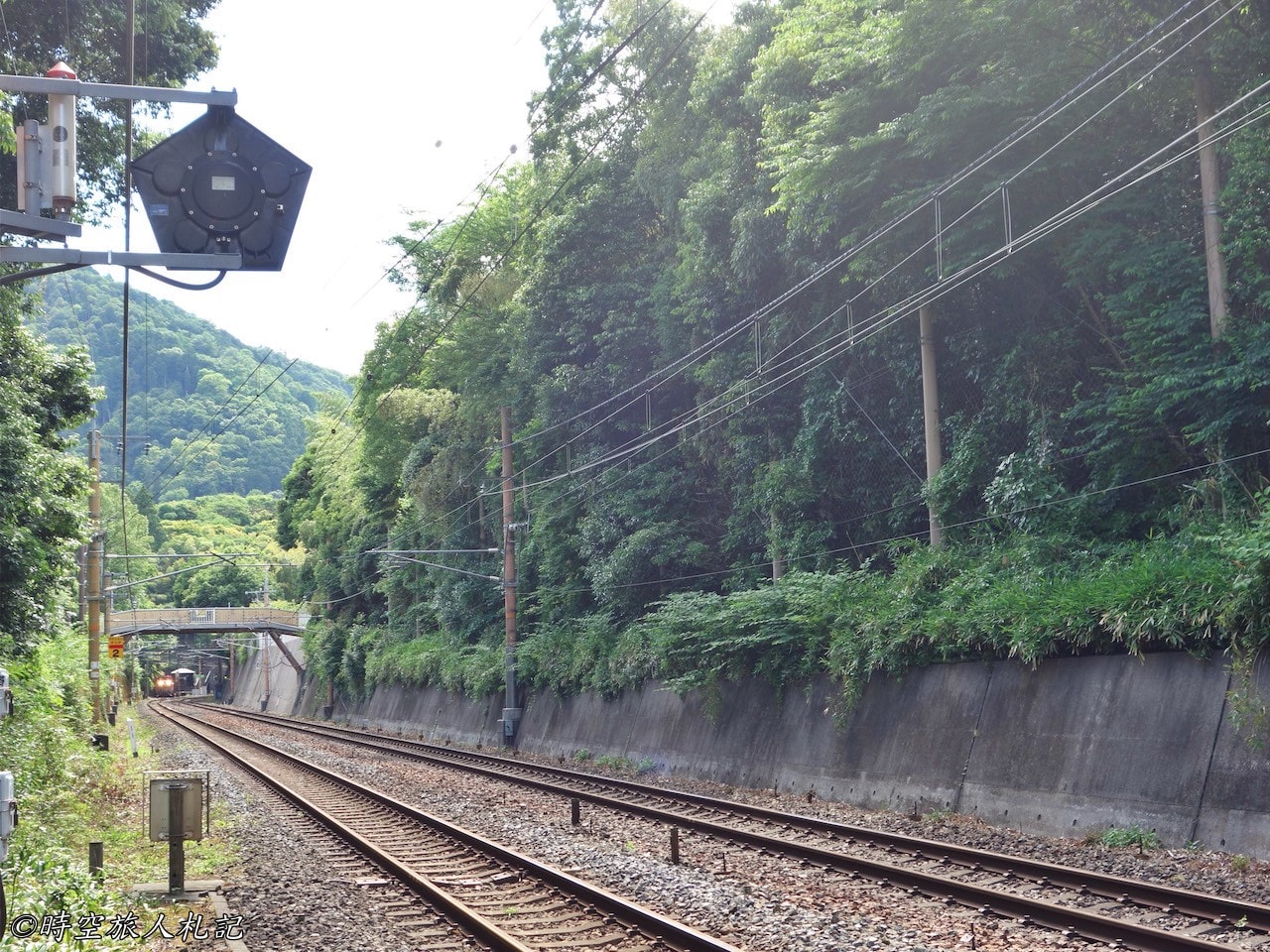
A bamboo path leads to Nonomiya Shrine, which is a good place to get married.
![Kansai, Japan] What are the must-see attractions in Kyoto for the first time? The first visit to Kyoto sightseeing recommendations to organize 102 Kyoto,Kyoto Attractions,Kyoto 3 Days 87](https://blog.travelhackfun.com/wp-content/uploads/2021/06/batch_2017-05-27-13-44-04-1.jpg)
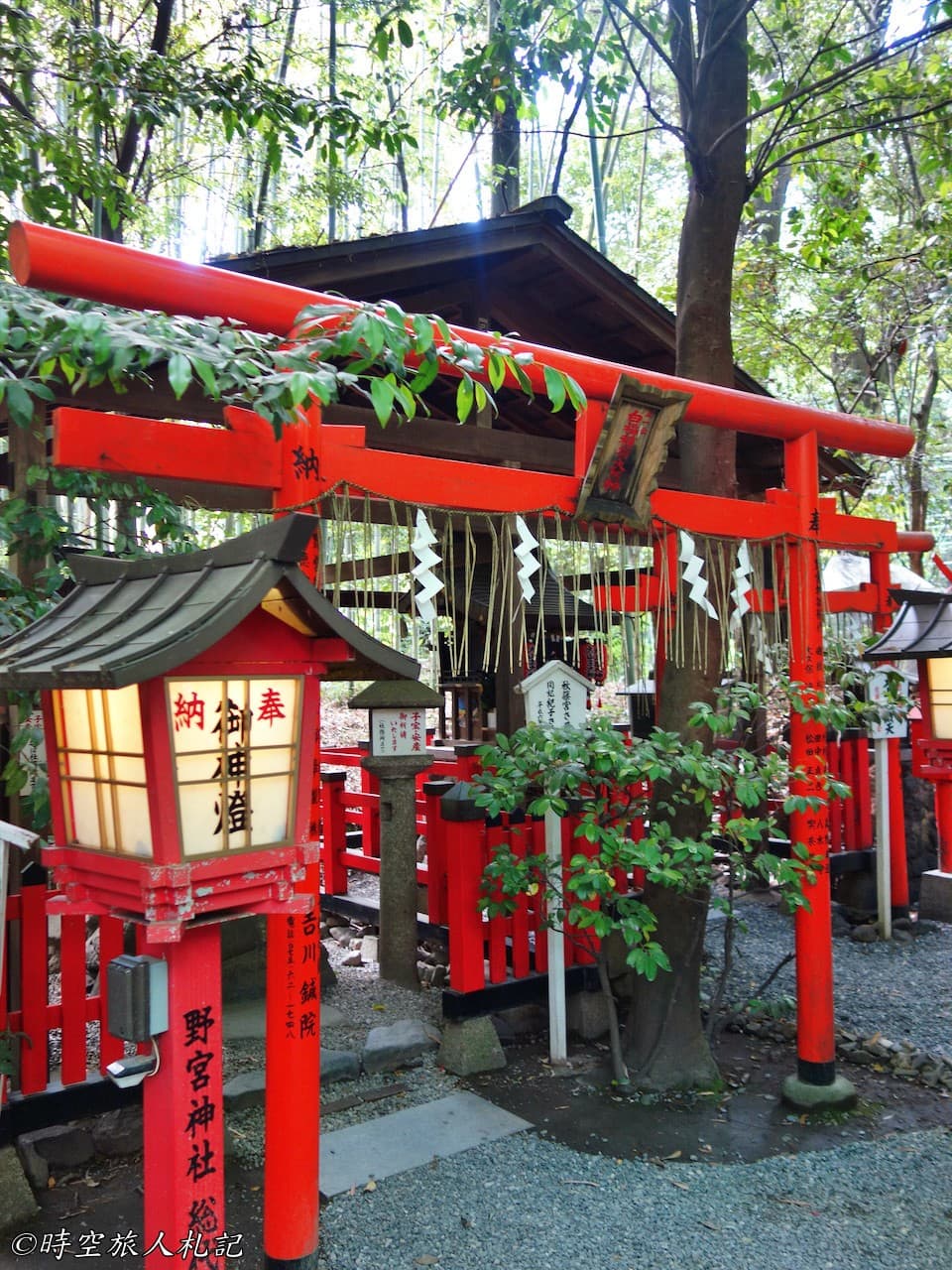
![Kansai, Japan] What are the must-see attractions for a three-day trip to Kyoto for the first time? Recommendations for the first visit to Kyoto 104 Kyoto,Kyoto Attractions,Kyoto 3 Days 89](https://blog.travelhackfun.com/wp-content/uploads/2021/06/batch_2017-05-27-13-47-12.jpg)
Further reading
- Transportation from Tokyo to Kyoto: Shinkansen
- More Kansai Related Articles
- More Kyoto Related Articles
Thank you for visiting our website.
All the content on this site is original and shared with the purpose of providing valuable information. We sustain the operation of this site through a small amount of advertising and sponsored links. If you click on links to third-party merchants on our site and make purchases, we may receive a portion of the sales as a commission. If you click on links to third-party merchants on our site and make purchases, we may receive a portion of the sales as a commission.
Find more posts on a map Here.
My recommended resources for hotel bookings.
Recommended travel credit card for US-based travelers
Travel with just a backpack!
Buy me a coffee and support my contents!
If you are interested in quoting this article or using any part of its content and images on your website or publication, please contact us via email to request permission.
